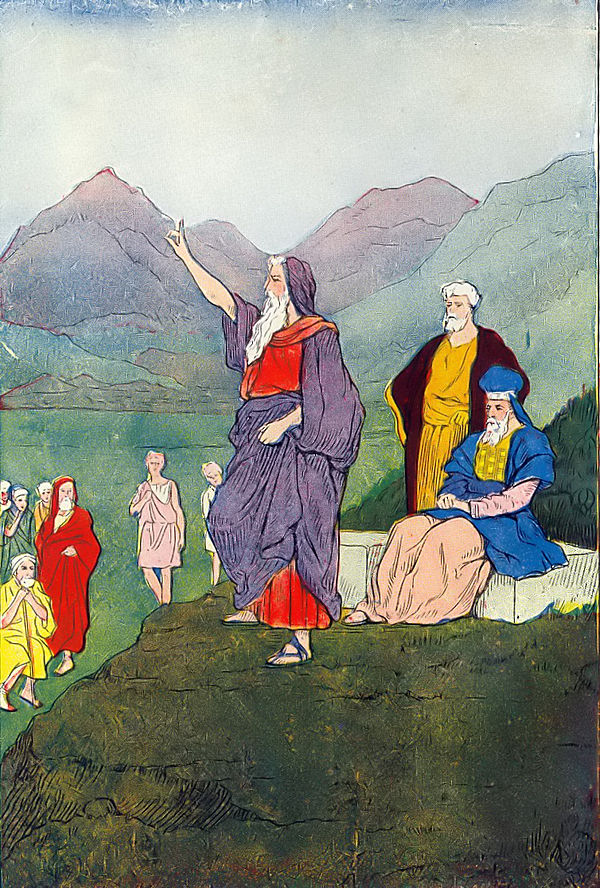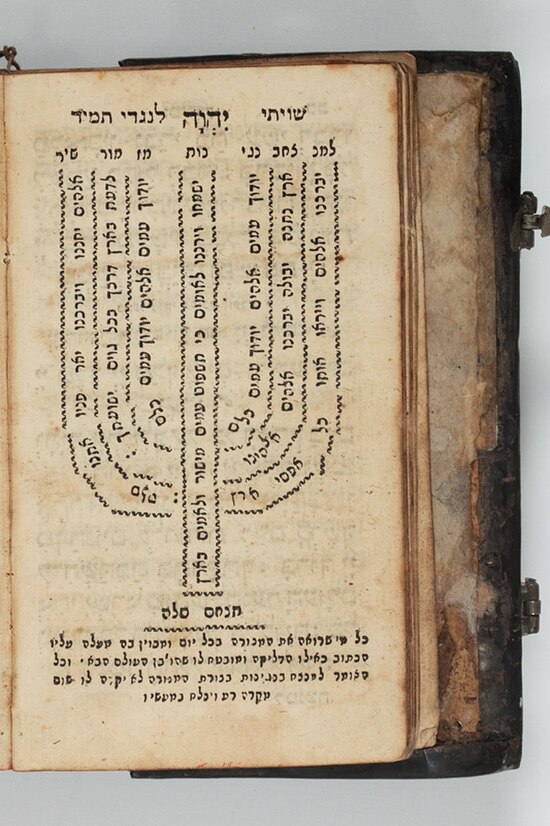Tzadik
Videos
Page
Tzadik is a title in Judaism given to people considered righteous, such as biblical figures and later spiritual masters. The root of the word ṣadiq, is ṣ-d-q, which means "justice" or "righteousness". When applied to a righteous woman, the term is inflected as tzadika/tzaddikot.

Joseph interprets Pharaoh's Dream (Genesis 41:15–41). Of the biblical figures in Judaism, Joseph is customarily called the Tzadik.

Moses speaks to the children of Israel

Correspondences; Yesod-Foundation: 9th sefirah, Tzadik, Covenant, channels Heaven to 10th sefirah: Kingship, Earth, Shekhinah, Israelites.

The Hasidic development of the tzadik combined the former roles of private mystic and social Maggid into communal mystical leadership. Hasidic thought internalised the Ayin-Yesh Heavenly duality of Kabbalah into a complete paradigm for Deveikut perception of Divine Omnipresence. The Hasidic tzadik embodied this as a channel for the Divine flow.[citation needed]
Kabbalah
Videos
Page
Kabbalah or Qabalah is an esoteric method, discipline and school of thought in Jewish mysticism. A traditional Kabbalist is called a Mekubbal. The definition of Kabbalah varies according to the tradition and aims of those following it, from its origin in medieval Judaism to its later adaptations in Western esotericism. Jewish Kabbalah is a set of esoteric teachings meant to explain the relationship between the unchanging, eternal God—the mysterious Ein Sof —and the mortal, finite universe. It forms the foundation of mystical religious interpretations within Judaism.

Jewish Kabbalists portrayed in 1641; woodcut on paper. Saxon University Library, Dresden.

Kabbalistic prayer book from Italy, 1803. Jewish Museum of Switzerland, Basel.

Latin translation of Gikatilla's Shaarei Ora

Grave of Rabbi Akiva in Tiberias. He features in Hekhalot mystical literature, and as one of the four who entered the Pardes